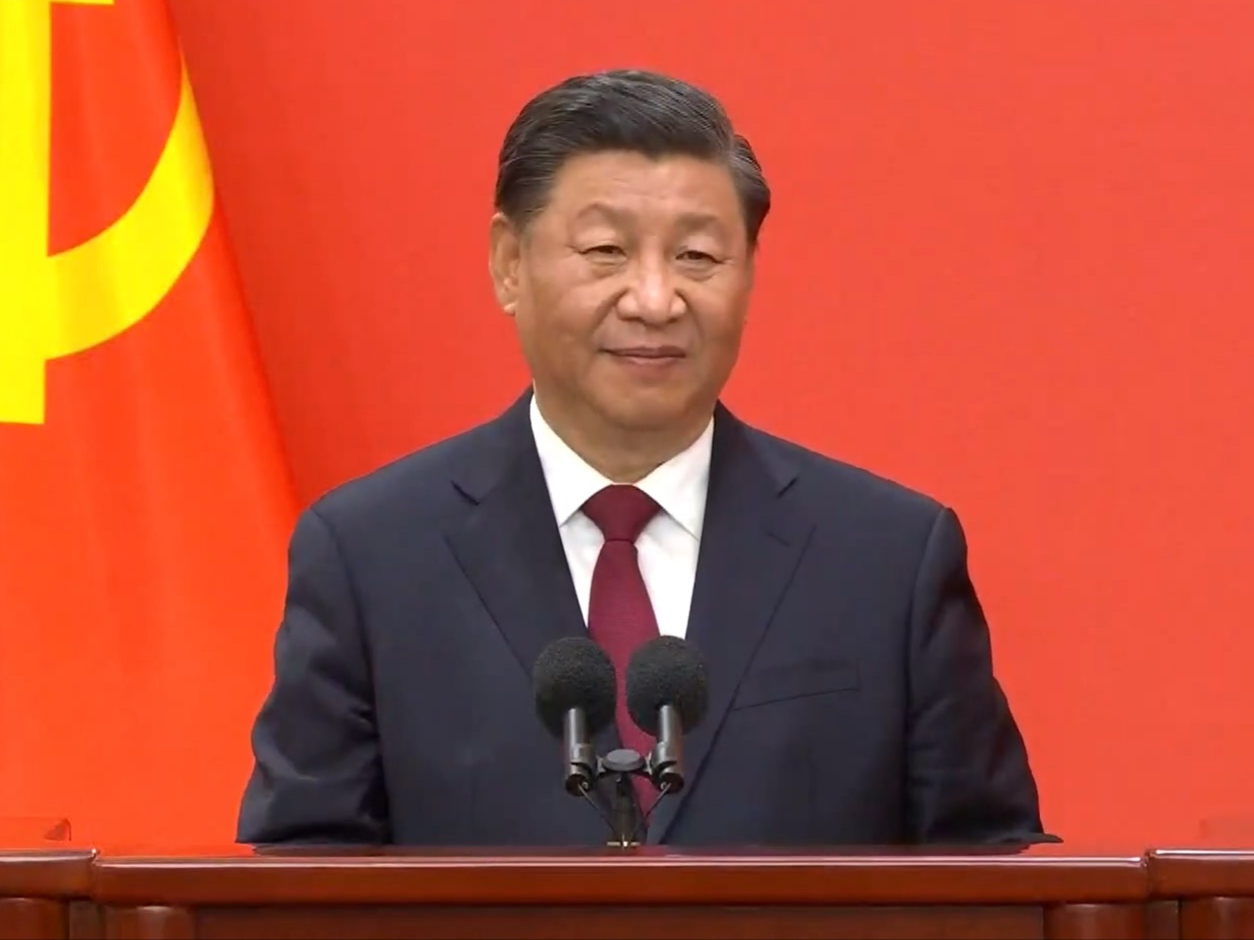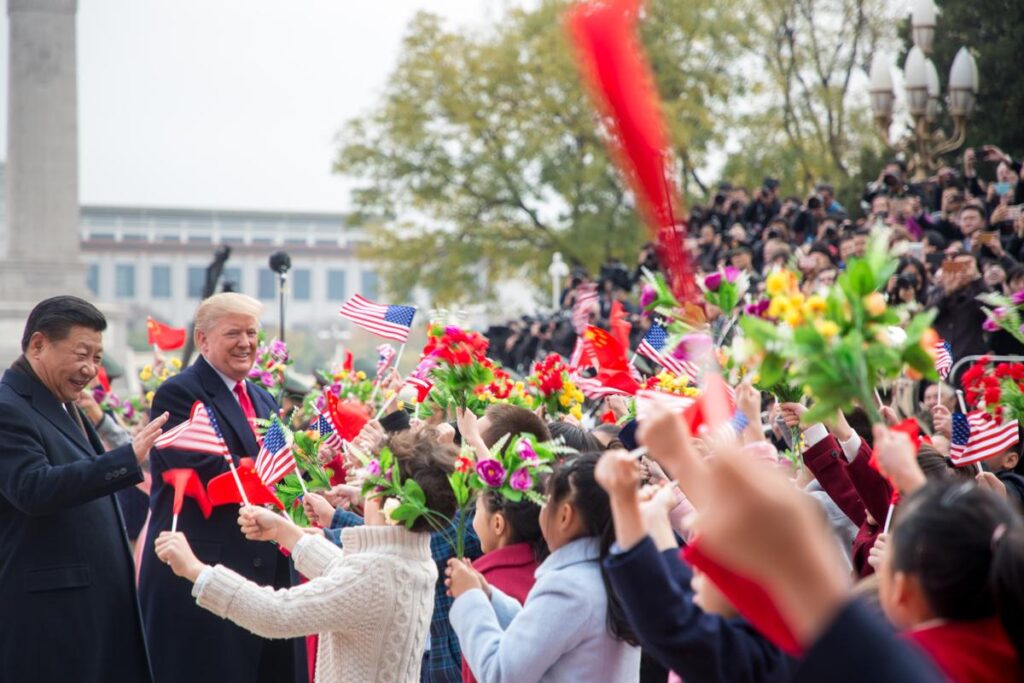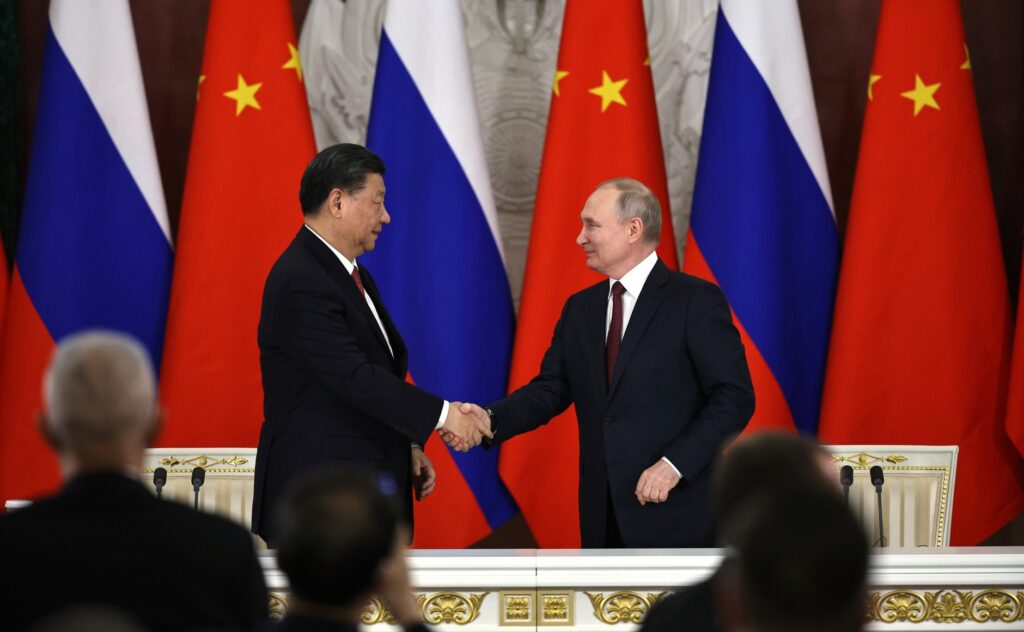Now Reading: How Beijing plans to bounce back against Trump’s tariffs
-
01
How Beijing plans to bounce back against Trump’s tariffs
How Beijing plans to bounce back against Trump’s tariffs

China’s president Xi Jinping recently held a meeting with 40 leaders of multinational companies, including BMW and AstraZeneca.
In contrast to Donald Trump’s rhetoric, Xi told the top level executives that globalisation was not going away. Xi is attempting to boost foreign investment in China, which has dropped in the last few years, and build new relationships that will offset Trump’s tariffs on many Chinese goods.
In the March 28 meeting, Xi “vowed to improve market access” and assured corporate leaders that “lines of communication” between them and the Chinese government are open.
Xi is hoping to build on an anti-Trump bounce and inspire businesses to back Beijing as some signs emerged that China’s economy was doing a little better than expected in early 2025. Industrial production went up by 5.9% in January and February. Credit growth, which measures the amount of loans banks give out, also appears to be picking up, suggesting that businesses might be growing in China.
Retail sales, which are a major economic marker indicating consumer spending, has risen by up to 4% in January and February this year, compared to last year.
Beijing is also willing to create further stimulus packages to sustain China’s economic growth, which might lift consumer confidence further.
But this is hampered by a real estate crisis that began in 2021. What followed was an already high local government debt that was exacerbated by the property crisis, and high youth unemployment that existed since 2023.
The big question then is what are the factors that could lead to a more buoyant outlook in China’s economic fortunes?
Beijing’s policy resolve
According to a Bloomberg report, China has traditionally relied on cheap loans and subsidies to boost economic sectors in infrastructure, manufacturing, and the property market. However, those times are over.
The problem is China has produced more goods to sell than people are willing to buy. In the past, Beijing relied on the west to purchase its products, but with rising protectionism and looming tariffs stemming from a Donald Trump-led US, US consumption of Chinese goods is likely to fall.
And if another key market in the form of the EU were to take a cue from Trump’s economic playbook and impose more tariffs on China, then Chinese hope for sales in the west for economic growth may not materialise.
Beijing’s surest way of boosting sales is through domestic consumption. This isn’t easy as China’s domestic spending remains relatively low at 40% of the country’s GDP, which is about 20% lower than the global average. And if Beijing wants cautious consumers to spend amid a relatively weak economic outlook, it needs to do more to raise consumer confidence.
Although China did introduce a stimulus package in September 2024, it has resolved to do more. In an early March 2025 speech in the Chinese parliament, Chinese premier Li Qiang promised a “special action plan” to vigorously raise domestic consumption for 2025. Several weeks later Li reiterated in the China Development Forum that Beijing would roll out more stimulus packages when the need arose.
These assurances are likely to have helped improve market sentiment, and the fact that China’s GDP growth target was also set at an ambitious level of around 5%, might signal Beijing’s confidence and resolve that the economy will improve.
China’s AI revolution
In the past, China was considered a copycat nation known for manufacturing shanzai, or fake and pirated products. This difficulty in innovating and reliance on the designs of others largely lay with an education system steeped in rote learning, and a top-down culture with a conformist approach.
This is why experts thought China would struggle when the US decided to introduce restrictions on Chinese access semiconductor and AI technologies. However, despite these restrictions, China has managed to develop a highly capable AI model of its own in the form of DeepSeek, which was unveiled early this year, and immediately boosted China’s image as an innovator.
Unlike other AI models, DeepSeek was apparently made at a fraction of the cost of other traditional AI models such as ChatGPT, and may have a more efficient coding scheme that allows for quicker problem solving. This has prompted Donald Trump to coin DeepSeek’s development as a wake-up call for the US tech industry.
Many AI startups in China are now revamping their business models to compete with DeepSeek, following widespread adoption of the latter’s technology. As the AI revolution in China could potentially reduce costs and thereby boost efficiency in the financial sector.
Following Trump’s return to the Oval Office, investors across the globe have been trying to reduce their reliance on the US by looking for investment opportunities elsewhere. This isn’t entirely surprising given Trump’s knack for the unpredictable, and how new US tariffs have been applied to a host of US allies such as Mexico, Canada, and the European Union.
While Trump is striking an increasingly protectionist tone, China is taking the opposite approach. Trump’s penchant for tariffs and disregard for the economic interest of US allies may mean Beijing might not need to do too much to attract more nations and businesses to consider turning towards Chinese markets.
Text of the article How Beijing plans to bounce back against Trump’s tariffs, by Chee Meng Tan published on The Conversation under the license of Creative Commons Attribution 3.0. Read the original in: The Conversation.
Stay Informed With the Latest & Most Important News
-
 01Pepe Mujica: The Rich Legacy of the Peasant Who Knew How to Make Concessions to the Market Without Losing Ideological Direction
01Pepe Mujica: The Rich Legacy of the Peasant Who Knew How to Make Concessions to the Market Without Losing Ideological Direction -
 02Democracy in the Face of Ecological Collapse
02Democracy in the Face of Ecological Collapse -
 03New modelling reveals full impact of Trump’s ‘Liberation Day’ tariffs – with the US hit hardest
03New modelling reveals full impact of Trump’s ‘Liberation Day’ tariffs – with the US hit hardest -
 04New Pope Possesses Attributes That Could Expand Vatican’s Diplomatic Influence in Global Geopolitics
04New Pope Possesses Attributes That Could Expand Vatican’s Diplomatic Influence in Global Geopolitics -
 05What’s so special about Ukraine’s minerals? A geologist explains
05What’s so special about Ukraine’s minerals? A geologist explains -
 0650 years later, Vietnam’s environment still bears the scars of war – and signals a dark future for Gaza and Ukraine
0650 years later, Vietnam’s environment still bears the scars of war – and signals a dark future for Gaza and Ukraine -
 07China’s new underwater tool cuts deep, exposing vulnerability of vital network of subsea cables.
07China’s new underwater tool cuts deep, exposing vulnerability of vital network of subsea cables.













